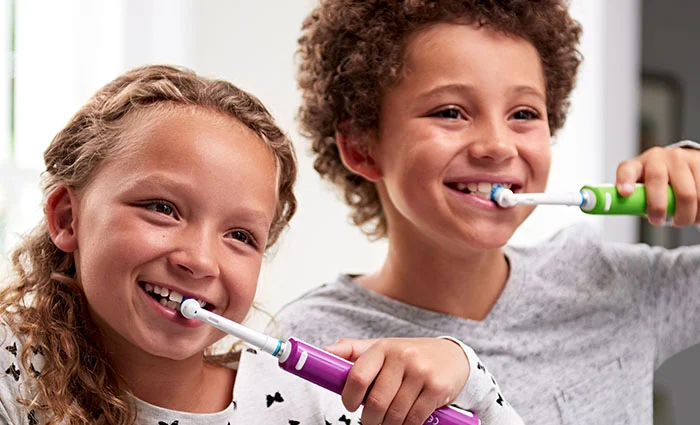
As your child gets older, they’ll begin to lose their baby teeth and their adult teeth will come through. At this stage, it’s still very important for you to keep their teeth and gums clean to ensure healthy development. As a parent, it's normal to have questions about how you can continue caring for your child’s teeth.
Why Brushing Is Important for Children Ages 6 to 12?
Keeping your child’s teeth clean is an important part of their daily routine. Just like when they were younger, their teeth are still susceptible to decay. Although baby teeth will eventually fall out, you should still be caring for them. Decay in baby teeth can cause your child pain and may have be removed. This can cause their other teeth to move, reducing space for adult teeth.
Tips on How to Brush Your Child’s Teeth
In the early stages of childhood, the way you brush your child’s teeth will be somewhat similar to what you did when they were toddlers. However, between the ages of 6-12 years, there are many milestones to keep in mind.
Ages 6-8
You should still be in charge of brushing your child's teeth. Letting them attempt to improve their technique is fine. However, you will still need to brush them yourself. As they get closer to age 8, you can start letting them brush their own teeth, but you should still be supervising.
Brushing should be the last thing they do before bedtime, and should occur on one other occasion during the day.
Brush their teeth for two minutes with a child-sized, soft- or medium-bristled manual toothbrush. You can also use an electric brush.
Use a pea-sized amount of fluoride toothpaste. The recommendation is between 1350ppm and 1500ppm fluoride, and no less than 1000ppm.
After brushing, your child should spit out the toothpaste but not rinse with water. This keeps a strengthening layer of fluoride on their teeth.
Ages 9-12
At about age 9, your child can be allowed to brush their own teeth. Some supervision will still be necessary. For the most part, children should be able to do this independently.
Make sure they’re brushing for two minutes, and using a pea-sized amount of 1350-1500 ppm fluoride toothpaste on a manual or electric toothbrush. They can safely use an adult toothpaste variety rather than a child variety.
After brushing, your child should spit out the toothpaste, but not rinse with water. This maintains the fluoride concentration on the teeth.
Tips on How to Make Brushing Easier
As children get older, you will most likely get past the stage in which it's hard getting them to cooperate with brushing. The goal now is consistency and maintaining regular brushing, especially as your child begins to brush their own teeth. If it's still a challenge to get them to brush, remember to persevere and let them know that not brushing can negatively affect their overall health.
The best thing you can do is ensure regular daily brushing at night time and one other time during the day. You can play a part by modeling good oral care behavior as well. Showing that you engage in regular brushing and flossing as part of your daily routine will help establish good oral habits as an important part of your child's day.
Just like when they were younger, remember that each day’s brushing routine doesn’t have to be perfect. If you happen to notice that your child is neglecting the basics of oral care, you should remind them how important daily brushing and flossing is for their overall health and well-being.
Related Articles
Sign Up
for expert advice and exclusive offers






